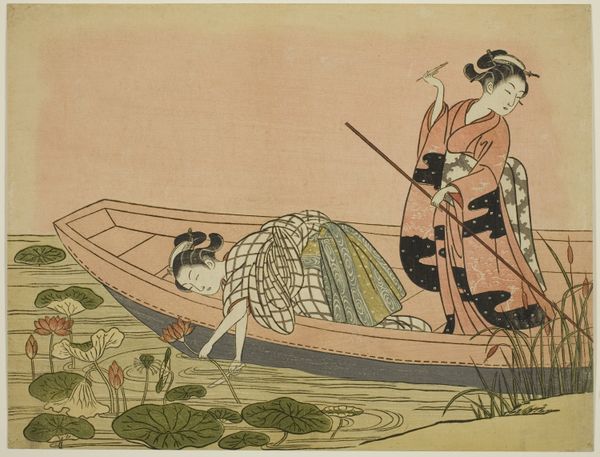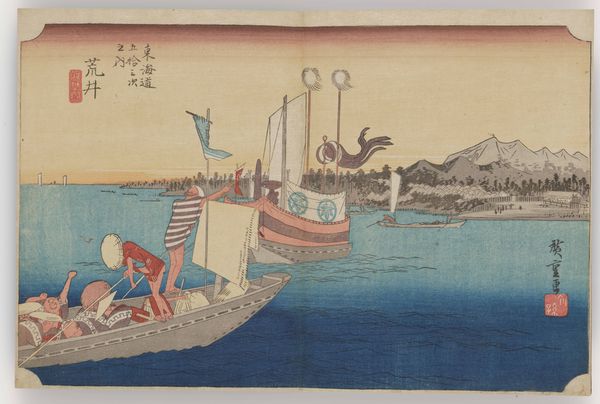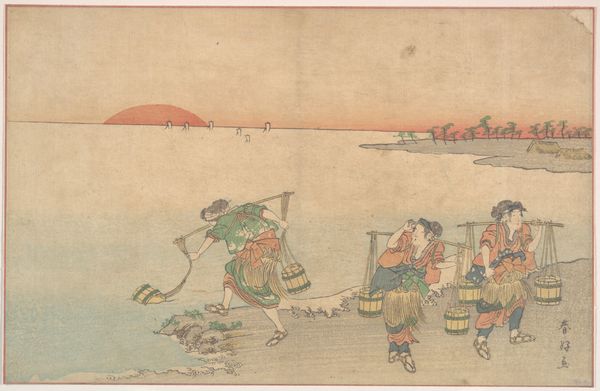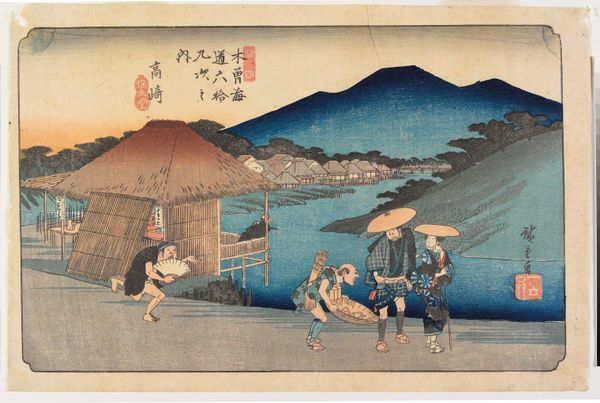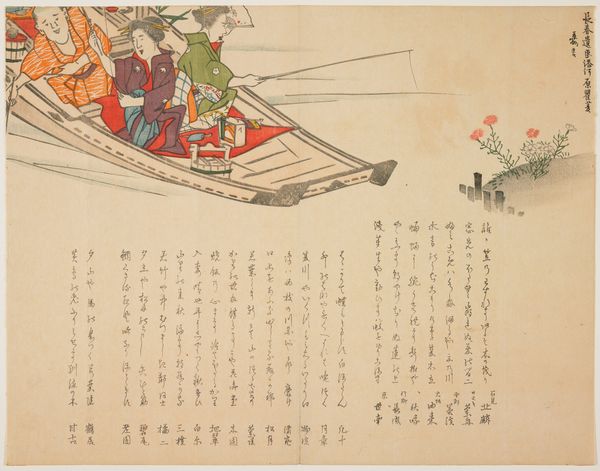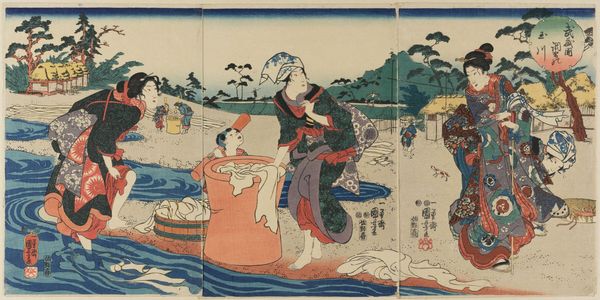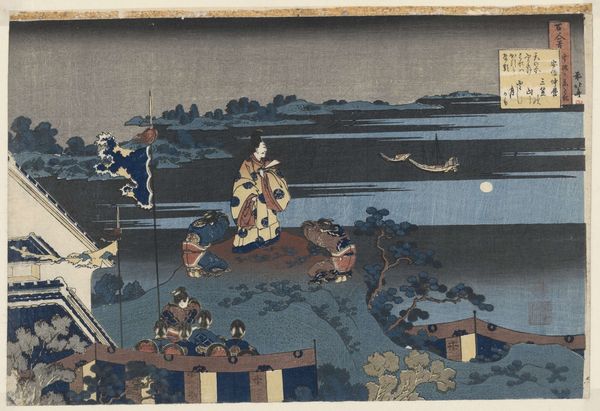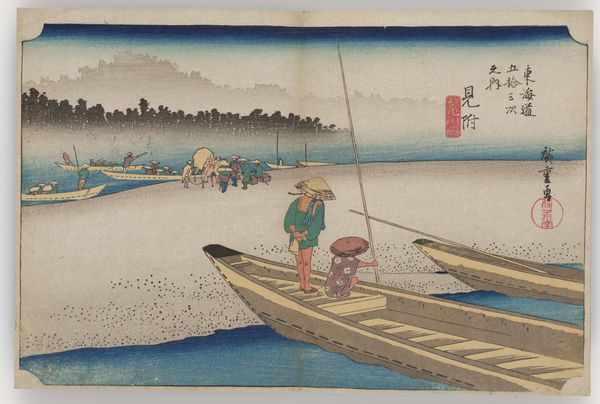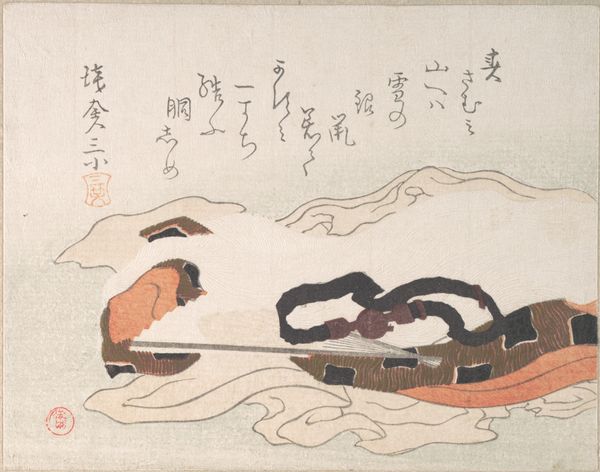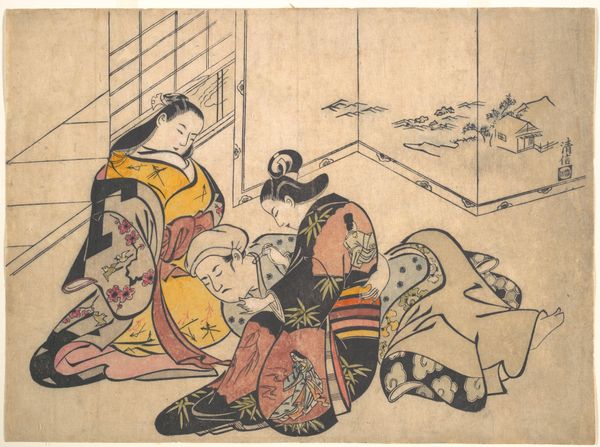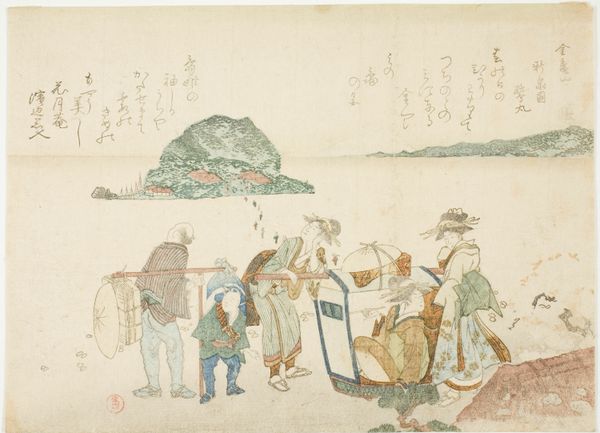
Early to Dawn (Akeyasuki あけやすき) 1832 - 1842
0:00
0:00
drawing, print, ink
#
drawing
#
ink painting
# print
#
asian-art
#
landscape
#
ukiyo-e
#
ink
Dimensions: 9 3/4 × 7 5/16 in. (24.7 × 18.5 cm)
Copyright: Public Domain
Curator: This is "Early to Dawn" by Ohara Donshu, also known as Akeyasuki, created between 1832 and 1842. It’s currently held at the Metropolitan Museum of Art. Editor: My immediate impression is a sense of everyday festivity. The lanterns create this diffused, gentle light, setting a very communal, accessible tone. Curator: Yes, and considering it’s an Ukiyo-e style print, likely woodblock, the availability of such scenes really democratized art in that period. We see ordinary people enjoying themselves at what appears to be a market or festival. What sort of symbolic context can we apply? Editor: Well, lanterns themselves are heavy with symbolism. Beyond literal illumination, they can represent guidance, hope, and remembrance of ancestors, often guiding spirits during festivals. Notice the particular designs on the lanterns too. It would be interesting to study those specific patterns. Curator: Right, the process of creating these designs and then transferring them onto woodblocks itself indicates a fascinating artistic and production-related consideration. Imagine the labor involved in carving the blocks for each color. Editor: It reflects a whole system of artistry and labor, not just a single artistic genius at work. Look at the implied movement in the image—from the vendors in the back to these small details of people gathering together, talking and sharing what seem to be food items in the foreground. There's something deeply human, even sentimental. Curator: Indeed. By focusing on material culture and means of artistic production, it allows us to expand our interpretation of what we traditionally value as art. Each part signifies material relationships. Editor: It also draws in these fascinating cross-cultural mythologies with themes such as good luck, happiness, safety and sometimes just something as a prayer for light through darkness in their family’s lives that’s something still present in the traditions, too. Curator: Absolutely. Investigating materials used in these works allows us to view not just artistry, but cultural significance inherent in all objects people use daily. Editor: Seeing how symbolism merges with such intimate depictions of common life makes me see this piece in an entirely new light.
Comments
No comments
Be the first to comment and join the conversation on the ultimate creative platform.
